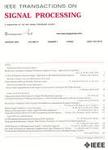版权所有:内蒙古大学图书馆 技术提供:维普资讯• 智图
内蒙古自治区呼和浩特市赛罕区大学西街235号 邮编: 010021

作者机构:Xidian Univ State Key Lab Integrated Serv Networks Xidian 710071 Peoples R China Western Sydney Univ Sch Comp Data & Math Sci Sydney NSW 2751 Australia
出 版 物:《IEEE TRANSACTIONS ON SIGNAL PROCESSING》 (IEEE Trans Signal Process)
年 卷 期:2025年第73卷
页 面:372-385页
核心收录:
基 金:National Natural Science Foundation of China [U2441250, 62231027, 62071364] Natural Science Basic Research Program of Shaanxi [2024JC-JCQN-63] Guangxi Key Research and Development Program [2022AB46002] Innovation Capability Support Program of Shaanxi [2024RS-CXTD-01]
主 题:Noise Blind equalizers Convergence Signal processing algorithms Gaussian noise Equalizers Vectors Steady-state Cost function Symbols Blind equalization modulus match error negative Gaussian kernel successive approximation method fast converging speed
摘 要:This paper proposes a blind equalization algorithm for dispersive wireless communication systems that employ high throughput quadrature amplitude modulation signals under both Gaussian and impulsive noise environments. A novel cost function that combines the modulus match error function with the negative Gaussian kernel function is established to efficiently obtain the weight vector associated with the blind equalizer. Some preferable properties of the novel cost function are presented. Intensive studies show that the proposed cost function efficiently reduces the maladjustment caused by the modulus mismatch error and efficiently suppresses the negative influence resulting from large errors. Moreover, an efficient successive approximation method for minimizing the established cost function is proposed for fast searching of the optimal weight vector. Very importantly, it is proved that the proposed successive approximation method possesses superlinear convergence. Finally, extensive simulations are provided to demonstrate that the proposed blind equalizer has better performances than the existing methods under both Gaussian and impulsive noise circumstances in terms of equalization quality and equalization efficiency.